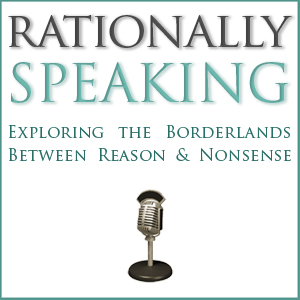How to be a data detective (Tim Harford)
Rationally Speaking Podcast
New York City Skeptics
4.6 • 787 Ratings
🗓️ 10 June 2021
⏱️ 63 minutes
🧾️ Download transcript
Summary
When you see a statistic reported in the news, like "10% of University of California Berkeley students were homeless this year," how do you evaluate it? You shouldn't blindly accept every statistic you read. But neither should you reject everything that sounds surprising. Tim Harford, economist and author of The Data Detective: Ten Easy Rules to Make Sense of Statistics, talks about the heuristics he recommends using, and the mistakes people tend to make.
Transcript
Click on a timestamp to play from that location
| 0:00.0 | Today's episode of Rationally Speaking is brought to you by Givewell. There are over a million |
| 0:05.3 | and a half non-profits in the U.S. alone, but some of them are a lot more effective than others. |
| 0:10.6 | How do you know where your donation will actually make a difference? Givewell does thousands |
| 0:14.7 | of hours of research every year to figure out which charities have the strongest empirical case |
| 0:19.1 | for impact. Visit givewell.org to see their list |
| 0:22.6 | of recommended charities. Some help people in dire poverty. Others save children from dying of |
| 0:28.2 | cheaply preventable disease. The research is free for anyone to use and Givewell doesn't take |
| 0:33.1 | a cut of your donation. Give With Int intention at givewell.org. |
| 0:57.9 | Welcome to rationally speaking, the podcast where we explore the borderlands between reason and nonsense. |
| 1:04.8 | I'm your host, Julia Galef, and today's episode features Tim Harford, an economist and journalist who writes the undercover economist column for the Financial Times, and the author of multiple books, including most recently, |
| 1:12.8 | The Data Detective, Ten Easy Rules to Make Sense of Statistics. The idea of the book is to help |
| 1:18.6 | you evaluate statistical claims that you read or hear with a skeptical eye, but not a reflexively |
| 1:26.5 | skeptical eye. So we talk about that and also about how to |
| 1:31.2 | overcome motivated reasoning, which is something I wrote a whole book on and Tim devotes a chunk of |
| 1:36.4 | his book to as well. So it was interesting to compare notes and see where our approaches agree and |
| 1:43.2 | where they don't. |
| 1:47.4 | So here is my conversation with Tim Harford. |
| 2:01.0 | One thing I loved about your book was just the framing of it as kind of a corrective to this classic book that I'm sure a lot of listeners have heard of called How to Lie with Statistics, which came out in, I guess, the 50s. |
| 2:05.3 | And it was just kind of delightful to me because this book's very famous, and I've never seen anyone criticize it before. In fact, it actually hadn't occurred to me to be critical |
| 2:10.6 | of the book before, but you made this great case for why we need kind of a corrective to how |
| 2:14.9 | to lie with statistics. So could you just summarize like what that book is about and why you felt a corrective to How to Lie with Statistics. So could you just summarize what that book is about |
| 2:18.5 | and why you felt a corrective was needed? Absolutely. I mean, How to Lie with Statistics is a great |
... |
Please login to see the full transcript.
Disclaimer: The podcast and artwork embedded on this page are from New York City Skeptics, and are the property of its owner and not affiliated with or endorsed by Tapesearch.
Generated transcripts are the property of New York City Skeptics and are distributed freely under the Fair Use doctrine. Transcripts generated by Tapesearch are not guaranteed to be accurate.
Copyright © Tapesearch 2025.

